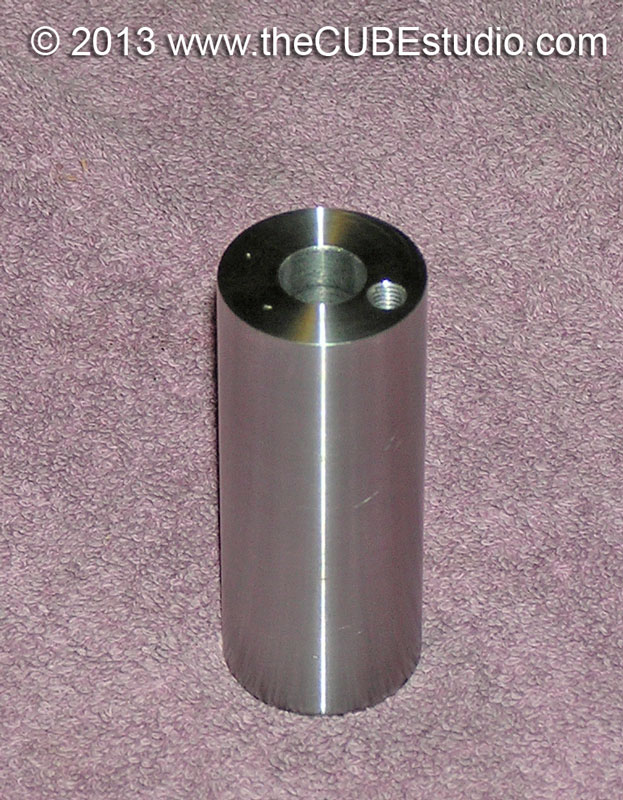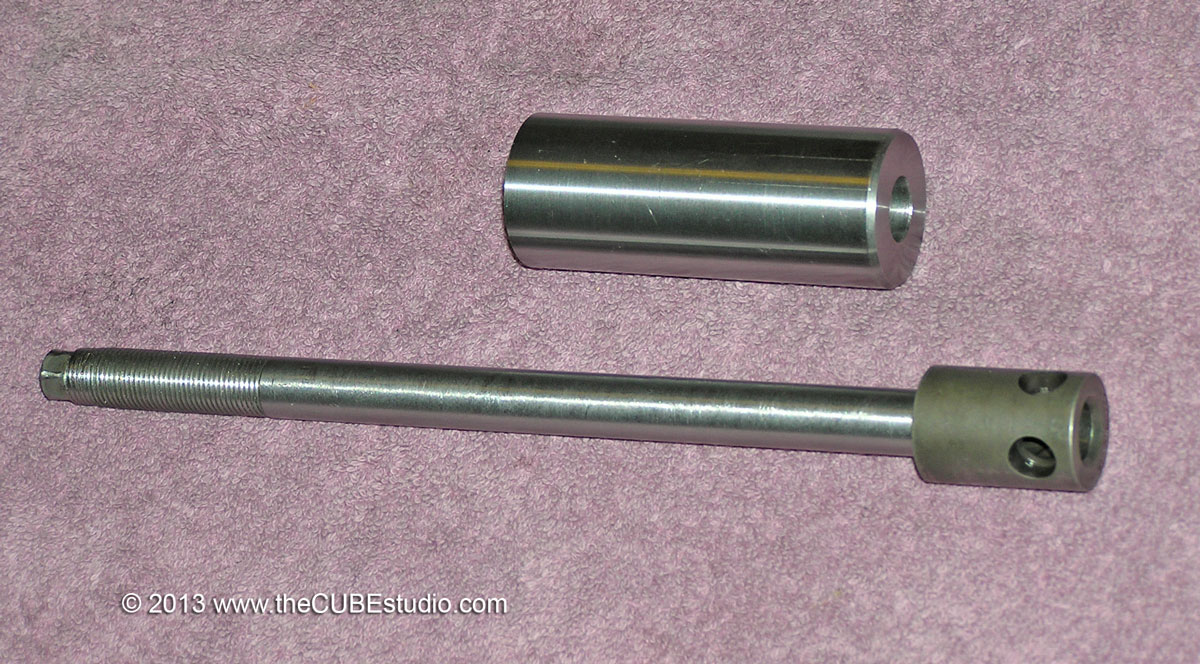I'll talk a bit on the ATC control scheme and then post a link to a video fragment showing the arm moving a toolholder from the spindle to the carousel and back. The video is not a mock up for testing this time around. It is the actual milling machine that will be compleded and shipped very soon.
Earlier in this thread there was a lot of discussion on the control scheme and programming for the ATC. I started the programming using my InTurn™ 4th axis controller as a serrogate since it already was set up to read sensors, generate a step/dir pulse stream, talk to MACH over ModBuss and the processor could easily handle the tool changing sequences. Connceptually a great idea, but in reality the added ATC code was making the software very much more complicated with a net result of making the InTurn™ part of the code far more difficult to document. maintain and upgrade.
I then made the decisiotn to move the ATC to its own processor, but that introduced a new can of worms in the form of having multiple devices communicating with MACH over mod buss. Getting one device to bi-com with MACH is challenging enough.
The solution, hopefully, is a Kflop motion controller from Dynomotion. The plan is to move the code to the Kflop for a very tightly integrated scheme which relies on the Kflop''s com with MACH thru the plug-in. This was 'supposed' to be a piece of cake since the Kflop was 'plug and play' with MACH and all I would need to do is port the existing C code for the ATC over to the Kflop and then finish it up. Well . . . . I suppose some people would say that catching a Yetti is no problem, all you need is a big enough cage and some Purina Yetti Chow to lure the beast and badda bing . . . Yetti Stew. The reality there is also probably just a little different.
After a LOT of work, I have these guys working with MACH including the homing programs. Homing the spindle is a requisite for a tool changer that deals with any toolholder that has drive dogs. (i.e. pretty much all industrial tapers). The drive dogs MUST be lined up, and lined up accurately, or the toolholder is going to refuse to go into the spindle. The handling mechanism ( a 'claw' in my design), has to accomodate the dogs at the spindle nose.
The last mod I had to make to the ATC was completed just yesterday and it was to add a 'tooth' to the tool storage 'pod' to keep the drive dogs aligned. During testing, the BT30 toolholders would occationally refuse to go into the spindle. It took some time to discover the cause; after delivering the toolholder to the storage pod on the carousel, the claw simply retracts to its 'park' position. As the spring loaded claw pulls off of the toolholder, it sometimes rotated the tooldoler very slightly in the pod. The next time that tool is grabbed, the dogs are out of alignment and there is no joy when it arrives at the spindle nose. A 'tooth' on the pod keeps the toolholders aligned and that problem is history.
Finally I am down to doing the final programming for the ATC on the Kflop. This mill already uses MACH's XYZABC and Spindle axis, but the Kflop has two more axis available and those are what will control the ATC's servo driven arm and carousel.
So here is a brief video showing the ATC moving a toolholder from the spindle to the carousel and back.
www.thecubestudio.com/ATC/ATCtest-480p.mp4





